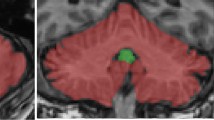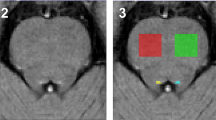Abstract
Activation studies with positron emission tomography (PET) and functional magnetic resonance imaging (fMRI) represent a powerful tool to study the functional anatomy of Parkinson's disease (PD). Activation studies offer the opportunity to study regional cerebral function in man in vivo under different conditions with the analysis of task specific changes in regional cerebral blood flow (rCBF) with PET or in the blood oxygenation level dependent (BOLD) effect with fMRI. The combination of PET and deep brain stimulation is particularly attractive to study the effects of discrete perturbations at different target structures throughout the basal ganglia-thalamocortical circuitries. The use of rCBF PET and fMRI to study the pathophysiology of PD in the motor and sensory system and mechanisms of dopaminergic therapy as well as surgical interventions will be reviewed.
Similar content being viewed by others
Author information
Authors and Affiliations
Rights and permissions
About this article
Cite this article
Ceballos-Baumann, A. Functional imaging in Parkinson's disease: activation studies with PET, fMRI and SPECT. J Neurol 250 (Suppl 1), i15–i23 (2003). https://doi.org/10.1007/s00415-003-1103-1
Issue Date:
DOI: https://doi.org/10.1007/s00415-003-1103-1




